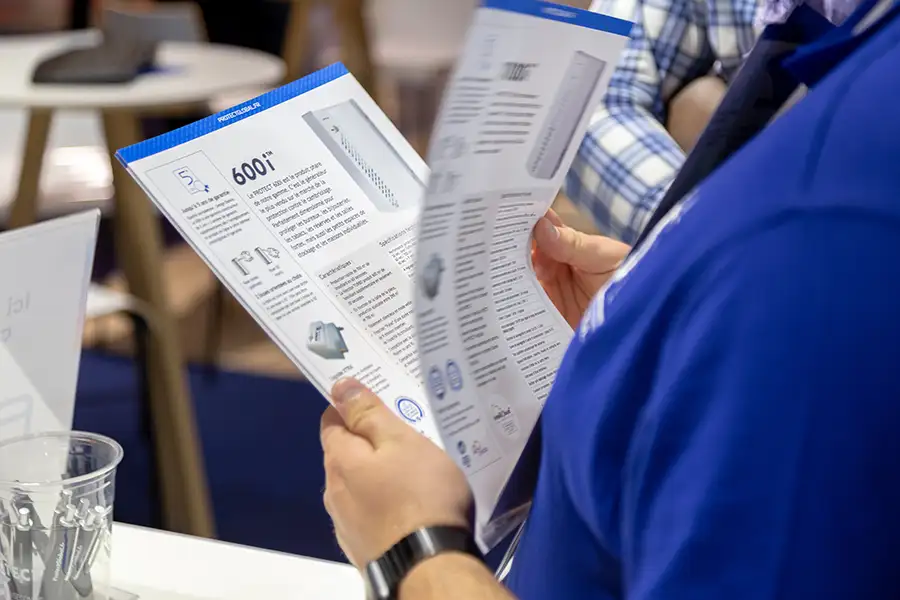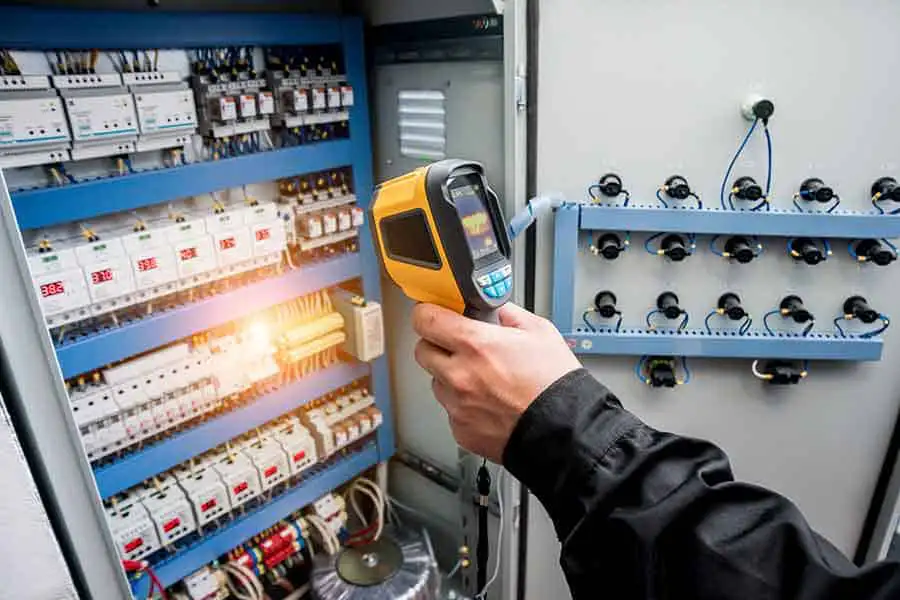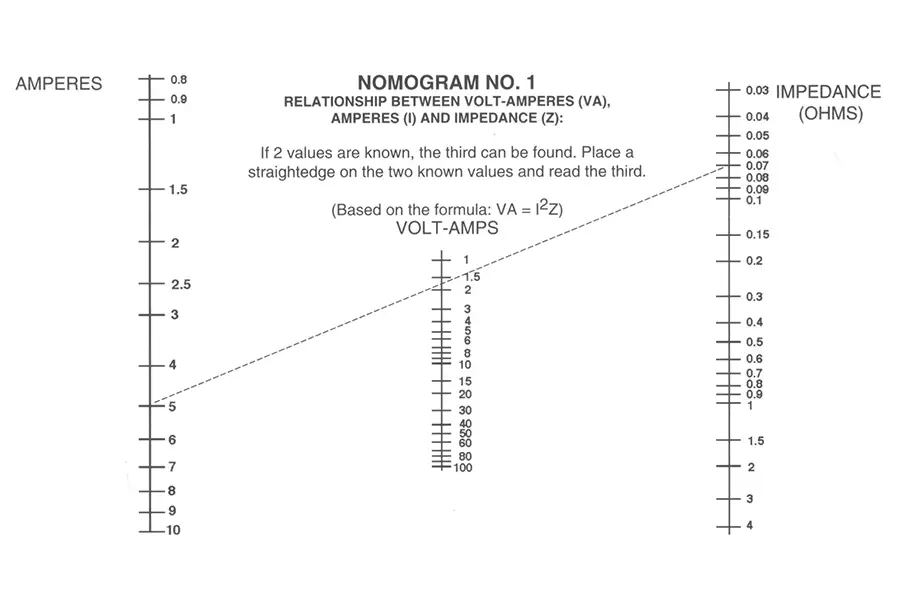Current Transformers
Usually rated on a basis of 5 amperes secondary current and used to reduce primary current to usable levels for transformer-rated meters or transducers and to insulate and isolate them from high voltage circuits.
Current Transformer Ratio
Ratio of primary to secondary current. For a current transformer rated 200:5, the ratio is 200:5 or 40:1.
Current Transformer Burdens
Normally expressed in ohms impedance such as B-0.1, B-0.2, B-0.5, B-0.9, or B-1.8. Corresponding volt-ampere values are 2.5, 5.0, 12.5, 22.5, and 45.
Voltage Transformers
Are used whenever the line voltage exceeds 480 volts or whatever lower voltage may be established by the user as a safe voltage limit. They are usually rated on a basis of 120 volts secondary voltage and used to reduce primary voltage to usable levels for transformer-rated meters, transducers and other loads.
Voltage Transformer Ratio
Ratio of primary to secondary voltage. For a voltage transformer rated 4200:120, the ratio is 4200:120 or 35:1.
Voltage Transformer Burdens
Normally expressed as volt-amperes at a designated power factor. May be W, X, M, Y, or Z. W is 12.5 V.A. @ 0.10 pf; X is 25 V.A. @ 0.70 pf; M is 35 V.A.@ 0.20 pf; Y is 75 V.A. @ 0.85 pf and Z is 200 V.A. @ 0.85 pf. The complete expression for a current transformer accuracy classification might be 0.3 at B-0.1, B-0.2 and B-0.5, while the potential transformer might be 0.3 at W, X, M and Y.
Transformer Ratio - (TR)
Total ratio of current and voltage transformers. For a 200:5 C.T. and 480:120 P.T., TR = 40 X 4 = 160.
Weatherability
Transformers are rated as indoor or outdoor, depending on construction (including hardware).
Accuracy Classification
Accuracy of an instrument transformer at specified burdens. The number used to indicate accuracy is the maximum allowable error of the transformer for specified burdens. For example, 0.3 accuracy class means the maximum error will not exceed 0.3% at stated burdens.
Rated Burden
The load which may be imposed on the transformer secondaries by associated meter coils, leads and other connected devices without causing an error greater than the stated accuracy classification.
Relaying Accuracy of Current Transformers
A relaying accuracy class is designated by two symbols which effectively describe the capability of the transformer as follows:
- C means the transformer ratio can be calculated, i.e. a window type current transformer with uniformly distributed windings. The C rating refers to a low reactance design.
- The secondary terminal voltage rating is the voltage which the transformer will deliver to a standard burden at 20 times normal secondary current without exceeding 10% ratio error. Furthermore, the ratio error must be limited to 10% at any current from 1 to 20 times rated current at any lesser burden. For example, relay accuracy class C100 means that the ratio can be calculated and that the ratio error will not exceed 10% at any current from 1 to 20 times nominal secondary current if the burden does not exceed 1.0 ohms (1 ohm X 5 amp X 20 times normal current = 100 volts.)
Continuous Thermal Rating Factor - (TRF)
Normally designated for current transformers and is the factor by which the rated primary current is multiplied to obtain the maximum allowable primary current without exceeding temperature rise standards and accuracy requirements. Example - if a 400:5 C.T. has a RTF of 2.0, the C.T. will continuously accept 400 X 2 or 800 primary amperes with the 5 X 2 or 10 amperes from the secondary. The thermal burden rating of a voltage transformer shall be specified in terms of the maximum burden in volt-amperes that the transformer can carry at rated secondary voltage without exceeding a given temperature rise.
Rated Insulation Class
Denotes the nominal (line-to-line) voltage of the circuit on which it should be used. FLEX-CORE® has transformers rated for 600 volts though 15kV.
Polarity
The relative polarity of the primary and secondary windings of a current transformer are indicated by polarity marks associated with one end of each winding. When current enters at the polarity end of the primary winding, a current in phase with it leaves the polarity end of the secondary winding. Representation of primary marks on wiring diagrams are shown as black squares, black circles, or H1. Secondary marks are shown as black squares, black circles or X1.
Hazardous Open-Circuiting
Operation of C.T.'s with the secondary winding open can result in a high voltage across the secondary terminals which may be dangerous to personnel or equipment. Therefore, the secondary terminals should always be short-circuited before a meter or other load is removed from service. It is recommended that shorting blocks or knife switch shorting assemblies be used with current transformers.
Div. Morlan & Associates, Inc.
Sales: +1-614-889-6152
Glossary of Terms
Have a Question? Need assistance with a specific application?
FLEX-CORE® has qualified and experienced engineers that will work with you to suggest the best possible solution for your needs.








